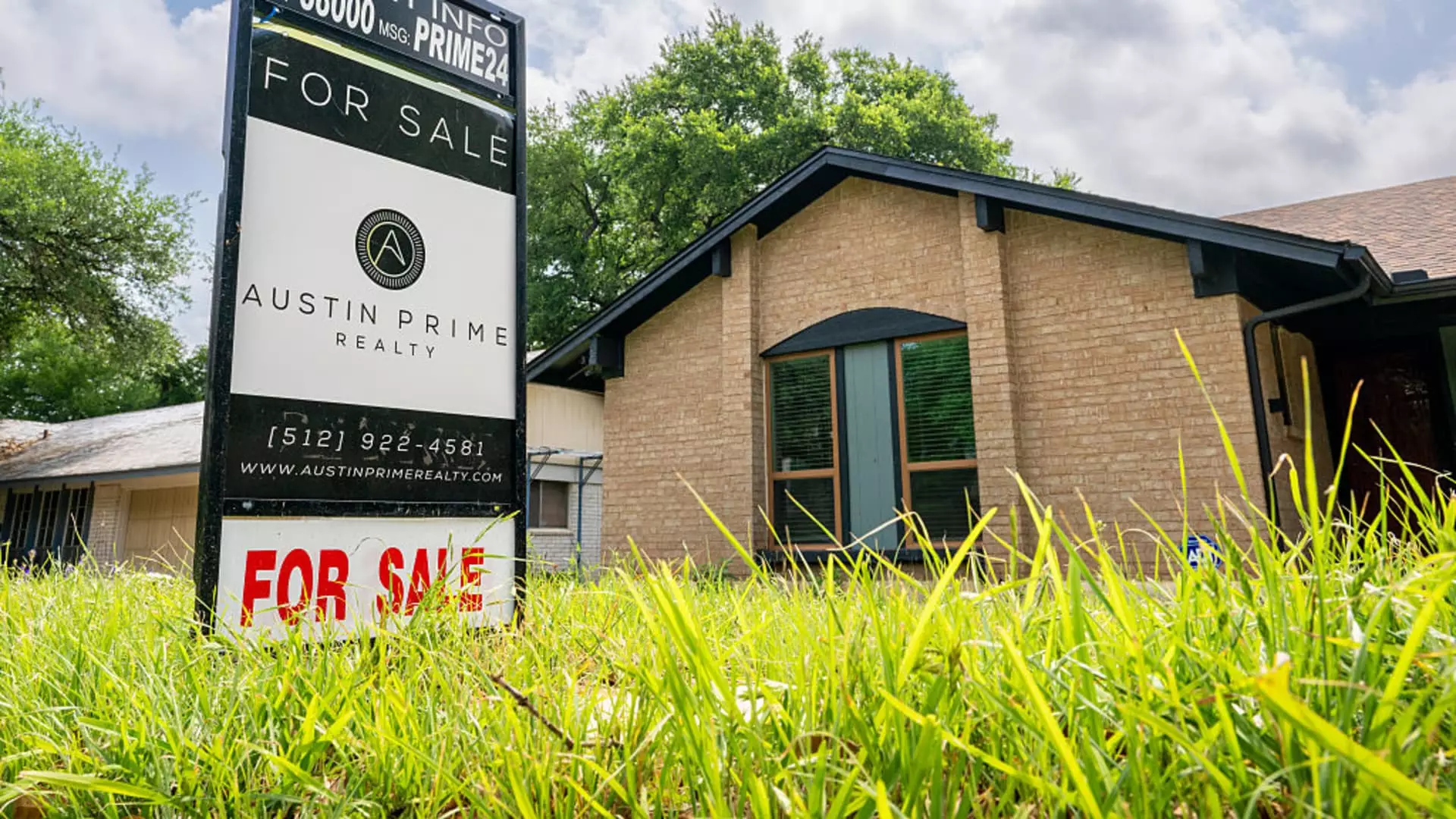Despite the minimal fluctuations in mortgage interest rates last week, there’s an undeniable wave of renewed interest from both homebuyers and those considering refinancing their existing loans. The Mortgage Bankers Association reported a striking 12.5% uptick in total mortgage application volume compared to the previous week, which, while impressive on the surface, still doesn’t paint a rosy picture when viewed within the broader historical context. We are at a juncture where the aspiration to own a home confronts the unyielding reality of stagnant economic indicators.
The average contract interest rate for 30-year fixed-rate mortgages, which saw a slight increase to 6.93%, highlights this tension. On one hand, this rate is a mere 9 basis points lower than it was a year ago, revealing the sluggish pace of change in a market that desperately needs dynamism. Contrastingly, the average rates for 15-year fixed loans and Federal Housing Administration loans did ease slightly, suggesting that while we are stuck in a quagmire, there are small victories to be celebrated.
Resilience in the Face of Uncertainty
What’s particularly remarkable is that this surge in applications has occurred despite the prevailing economic uncertainty. With Treasury rates fluctuating, borrowers are seemingly squeezing any available opportunity from this unpredictable environment. Joel Kan from the MBA acknowledged this moment of optimism, noting that post-Memorial Day, overall mortgage applications hit a level not seen in over a month. Yet, while the 16% rise in refinancing applications and a 10% increase in mortgages to purchase homes feel promising, they often echo the age-old adage: don’t count your eggs before they hatch.
The increase in available listings—now 31% higher than last year—offers a flickering glimmer of hope. However, this situation is subtle yet complex; buyers are peering at a market filled with new opportunities, yet they do so with caution as home prices begin to level off. It’s a landscape filled with potential, but one must wonder if this potential can transcend into meaningful action or if it will remain just that—a potential.
The Waiting Game: What Lies Ahead?
Looking forward, there’s a palpable tension building around the upcoming monthly inflation data and ongoing trade negotiations with China. These moments could catalyze significant shifts in the bond markets, perhaps curating a new chapter for mortgage rates. The question lingers: will these shifts invigorate the market, or will they push us back into a period of stagnation?
The current climate reflects a hesitance, a spotlight on the fragility of consumer confidence in housing. While the statistics indicate movement, they also pose the haunting question of whether this upward trend in applications can be sustained. With a fragmented economic landscape and a looming uncertainty, the dream of homeownership might very well teeter on a tightrope, influenced by external economic pressures rather than the inherent strength of the housing market itself.
In my view, unless there are material changes in how we approach economic policy and housing supply, we are bound to witness more of the same—a desire for homeownership caught in the crossfire of financial realities. Wouldn’t it be better to see concrete measures that cultivate a robust housing market instead of the mere flickers of hope amidst an uncertain economic backdrop? The resilience of consumers in the face of these challenges is commendable, but it’s a call to action for policymakers to meet this resilience with tangible support and stability.

